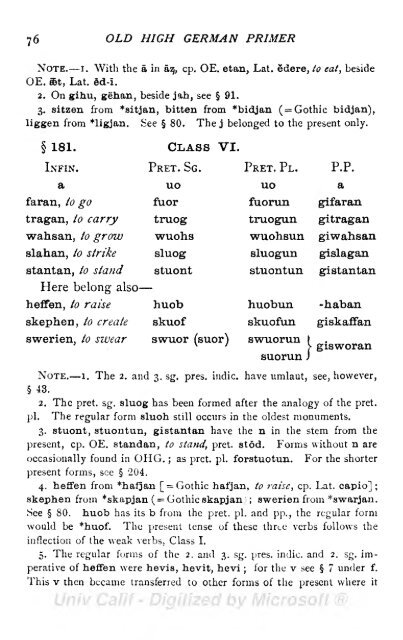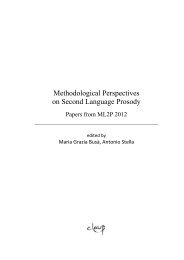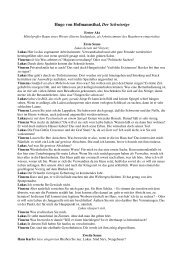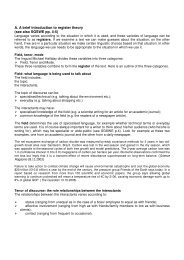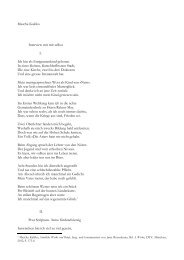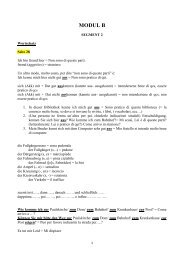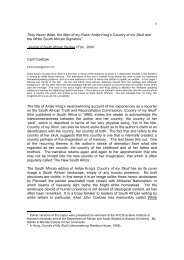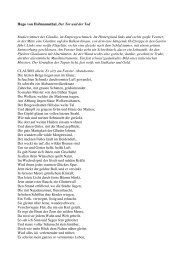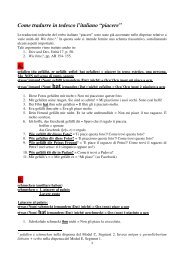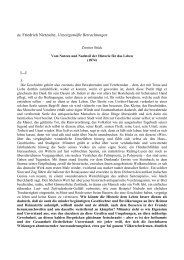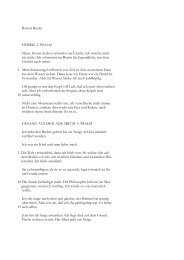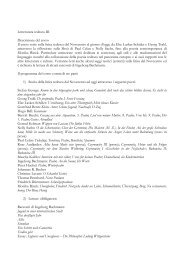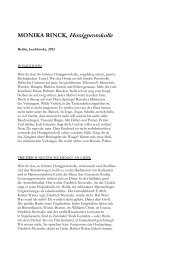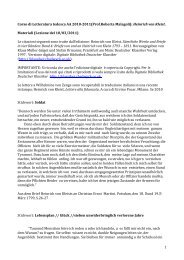Create successful ePaper yourself
Turn your PDF publications into a flip-book with our unique Google optimized e-Paper software.
7 6 OLD HIGH GERMAN PRIMER<br />
NOTE. i. With the a in &z,, cp. OE. etan, <strong>Lat</strong>. Sdere, to eat, beside<br />
OE. 6t, <strong>Lat</strong>. ed-i.<br />
2. On gihu, gehan, beside jah, see 91.<br />
3. sitzen from *sitjan, bitten from *bidjan (= Gothic bidjan),<br />
liggen from *ligjan. See 80. The j belonged to the present only.<br />
181.<br />
P.P.<br />
a<br />
gifaran<br />
gitragan<br />
giwahsan<br />
gislagan<br />
gistautan<br />
suorun J<br />
V<br />
-haban<br />
giskaffan<br />
gisworan<br />
NOTE. I. The 2. and 3. sg. pres. indie, have umlaut, see, however,<br />
43.<br />
2. The pret. sg. sluog has been formed after the analogy of the pret.<br />
pi. The regular form sluoh still occurs in the <strong>ol</strong>dest monuments.<br />
3. stuont, stuontun, gistantan have the n in the stem from the<br />
present, cp. OE. standan, to stand, pret. stod. Forms without n are<br />
occasionally found in OHG. ;<br />
as pret. pi. forstuotun. For the shorter<br />
present forms, see 204.<br />
4. heffen from *hafjan [<br />
= Gothic hafjan, to raise, cp. <strong>Lat</strong>. capio] ;<br />
skephen from *skapjan (= Gothic )<br />
skapjan swerien from<br />
; *swarjan.<br />
See 80. huob has its b from the pret. pi. and pp., the regular form<br />
would be *huof. The present tense of these three verbs f<strong>ol</strong>lows the<br />
inflection of the weak verbs, Class I.<br />
5. The regular forms of the 2. and 3. sg. pres. indie, and 2. sg. imperative<br />
of heffen were hevis, hevit, hevi ;<br />
for the v see 7 under f.<br />
This v then became transferred to other forms of the present where it


